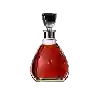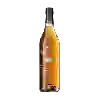
Domaine CarteroleMalecare
In the mouth this white wine is a .
This wine generally goes well with vegetarian, poultry or lean fish.
Taste structure of the Malecare from the Domaine Carterole
Light | Bold | |
Dry | Sweet | |
Soft | Acidic |
In the mouth the Malecare of Domaine Carterole in the region of Languedoc-Roussillon is a .
Food and wine pairings with Malecare
Pairings that work perfectly with Malecare
Original food and wine pairings with Malecare
The Malecare of Domaine Carterole matches generally quite well with dishes of pasta, vegetarian or poultry such as recipes of ham lasagness, zucchini and goat cheese quiche or okonomiyaki or japanese 'pancake.
Details and technical informations about Domaine Carterole's Malecare.
Discover the grape variety: Madeleine angevine O.
This variety was obtained in the 19th century by Christian Oberlin, by crossing the madeleine angevine with the bouquettraube, registered in the Official Catalogue of vine varieties list A1. It should not be confused with the said Madeleine Angevine because its resemblance is strong, at least in its bunches. Today, Madeleine angevine Oberlin is no longer cultivated, it is still only found in a few private homes, usually on trellises. - Synonymy: angevine oberlin, madeleine blonde oberlin (the synonymy of grape varieties, click here!)
Informations about the Domaine Carterole
The Domaine Carterole is one of of the world's greatest estates. It offers 11 wines for sale in the of Banyuls to come and discover on site or to buy online.
The wine region of Banyuls
Banyuls wines come from the South-eastern Part of Roussillon, in the south of France, in the lower Pyrenees, a few kilometres from the Spanish border. These naturally Sweet wines are consumed both as an aperitif and as a dessert. They come in a wide range of hues, from GoldenGreen (Banyuls Blanc) to Amber (Banyuls Ambré) to the intense garnet of the standard Banyuls Rouge. Unusually among the natural sweet wines of France, all Banyuls wines are made primarily from Grenache grapes of various colors.
The wine region of Languedoc-Roussillon
Languedoc (formerly Coteaux du Languedoc) is a key appellation used in the Languedoc-Roussillon wine region of southern France. It covers Dry table wines of all three colors (red, white and rosé) from the entire region, but leaves Sweet and Sparkling wines to other more specialized appellations. About 75% of all Languedoc wines are red, with the remaining 25% split roughly down the middle between whites and rosés. The appellation covers most of the Languedoc region and almost a third of all the vineyards in France.
The word of the wine: Piqué
Altered wine characterized by a vinegar smell.












